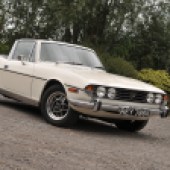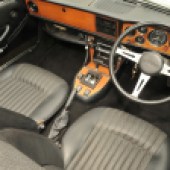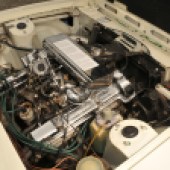Classics World’s Paul Wager test drives and reviews the Triumph Stag…
The Triumph Stag does’t deserve the reputation for fragility they picked up back in the day when they were just another car and neither back street garages of the day nor DIY-minded owners knew how to maintain the alloy V8 properly. If that has spiked your interest in the Stag then you won’t be the only one and as rising values recently have shown, the cars have gained a renewed appreciation. Not that they haven’t always been popular: the Stag boasts the highest survival rate of all the British classics with just over a third of production still on the road.
Despite its popularity, prices do still vary quite widely, with the entry ticket hovering at around the £7000 mark for running project cars needing work and sellers asking £10,000-£15,000 for nice cars or even up to £30,000 for show condition examples.
With its four seats and rollover bar, the Stag makes a supremely usable family-friendly classic though, so if you’re after a car to use and enjoy then those pricey show cars are best avoided. The Stag we have here is an ideal example from the middle of the market and is very much on the button and ready for use.
The history with the car suggests it’s received a fair bit of work in the past and the current white isn’t the colour it left Canley with. A bit of research suggests it was originally green, but it’s clearly a professional job and the white does suit the Stag nicely.
Elsewhere it’s all in nice presentable condition, with the interior and roof in good condition, the latter a modern replacement mohair item. The interior boasts a retro-style modern CD/radio which keeps the ’70s style nicely.
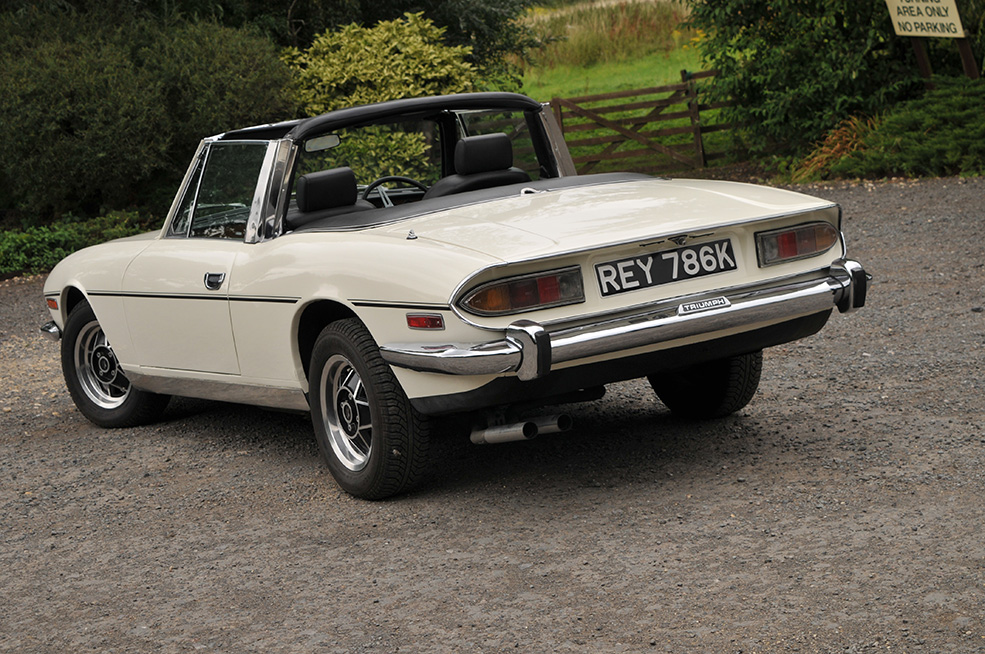
ON THE ROAD
Testing the car on a sunny August day, obviously we had to drop the top and the Stag uses the system later employed by BMW where the folded roof is hidden below a rigid cover to create an elegant profile. Seasoned owners reckon they can do it in under a minute, not that I’m about to challenge them any time soon. The Stag also comes with a hardtop and a storage stand.
This car retains the original Triumph V8 engine which these days is more desirable than the various transplants which were performed back in the day. The knowledge exists these days to make the Triumph engine perfectly reliable and you need only twist the key to confirm that the overhead cam V8 is far more refined than the old-school Rover engine. At idle it has a cultured woofle which under load changes to more of a bark but remains a distinctive sound.
Speaking of which, this car runs an aftermarket stainless system which gives the exhaust note just a little extra edge and is all the better for it. Cruising round the Worcestershire lanes it sounds superb and makes you realise that the Stag’s forte is brisk cruising rather than outright white-knuckled pace. As we noted last week, the Stag is a superb long-legged GT rather than a hardcore sports car and in this respect the automatic box suits it perfectly.
Mind you, it can still pick up the pace when required and even in automatic form is more than brisk enough to keep up with modern traffic. The Borg Warner box is a tough unit and this one changed up and down nicely. Elsewhere, the suspension and steering felt nice and tight, so clearly someone has spent their money in the right places.
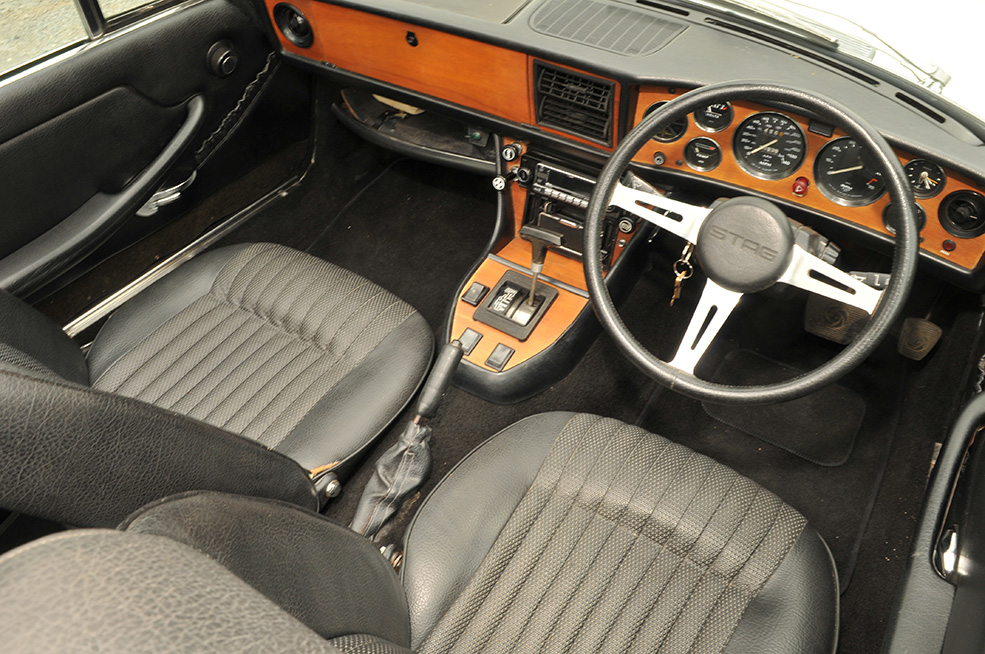
VERDICT
If you want a nice usable Stag then this is an ideal example and is ready to jump in and enjoy for the summer. With values of the cars continuing to inch upwards, it’s an attractive prospect.
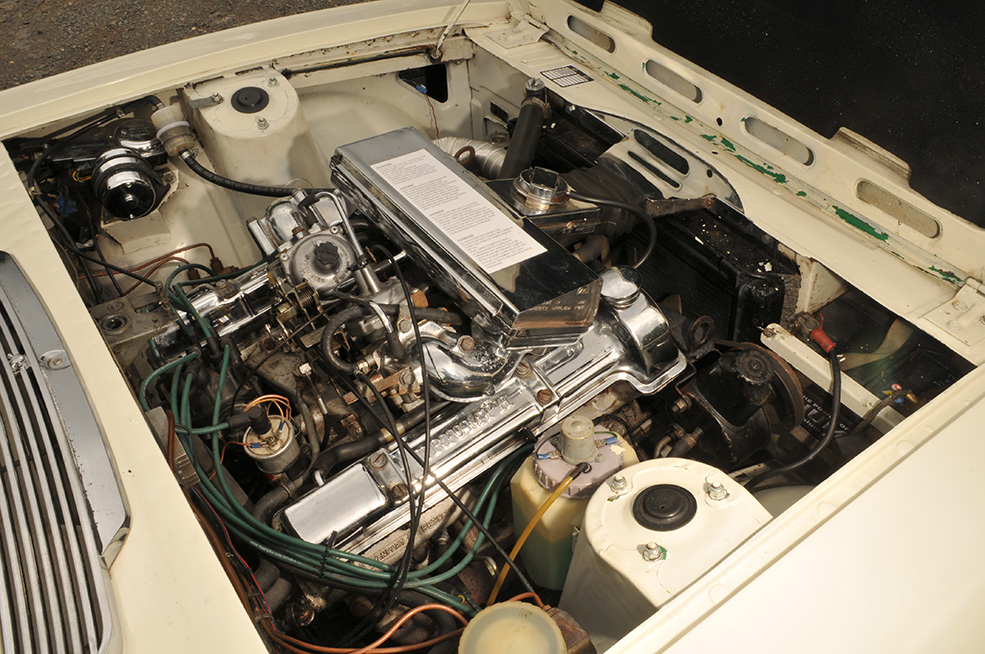
Tech Spec
Engine: 2997cc V8
Power: 145 bhp
Top speed: 112 mph
Economy: 30 mpg
Gearbox: three-speed auto


